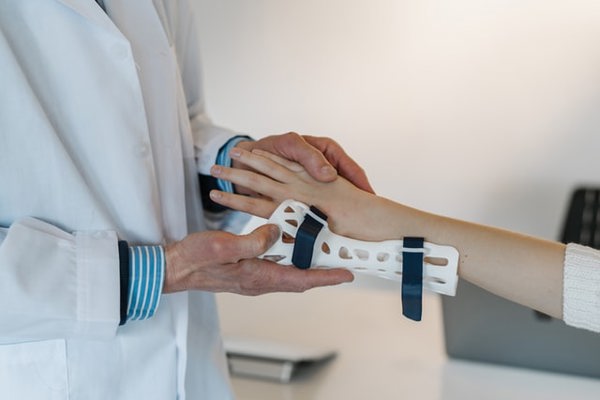What is the law?
Until fairly recently the courts had been engaged in debate over what the relevant standard of care should be in deciding whether the actions of one competitor towards another could be considered negligent thus attracting civil liability.
Recognising that a particular sports-related incident cannot be viewed in isolation and that regard ought to be paid to the sporting context within which it occurred, the courts in England have, over the years, wrestled with this tricky issue. They have made a number of attempts to categorise certain behaviour as that involving “reckless disregard” or “gross negligence” thereby falling below the standard of care expected and giving rise to liability.
However, the law in Scotland does now seem to be settled, following the case of Sharpe v Highland and Islands Fire Board [2007] CSIH 34. This action concerned football match between recruits and instructors held by Highland and Islands Fire Board following a training course. Mr Sharpe sustained a badly fractured leg following a mistimed, high tackle by one of the recruits during the game. He subsequently raised an action for damages against both the recruit who made the tackle and the Fire Board, as those vicariously responsible for their recruit’s negligent actions.
The case was dismissed at first instance and the subsequent appeal refused. Commenting on the facts at hand, and the wider question of liability, their Lordships hearing the appeal acknowledged that the standard of care in these types of action is difficult to define. Rather than attempting to devise a distinct standard of care, the court considered the appropriate the test in these types of cases to be akin to the familiar, common law neighbourhood principles expected of people in every day life, with each case being judged with reference to of its own unique set of facts. Lord Johnston summed up matters as follows, “the test to be applied in the context of negligence……is whether or not the competitor in question has committed an error of judgement that a reasonable competitor being a reasonable man of the sporting world would not have made.”
In short therefore, when considering whether the alleged negligent actions complained of amount to a breach of duty attracting liability, the conduct will be measured against the standard of skill – accounting for anticipated errors, or lapses in judgement - which might be expected of a reasonable rugby, hockey player, or footballer, depending on the particular sporting environment.
Establishing liability
Establishing liability for an accident which occurs on the field of play is unlikely to be straightforward and this is perhaps reflected in the low numbers of litigated claims. One of the key challenges for those pursuing a claim for damages relates to the objectivity, or otherwise, of witness evidence sought to be relied upon in proving the case. Inevitably those who witness an accident on the field of play at a sporting event are likely to be other participants, with an affiliation to their club, or alternatively partisan followers of either side involved in the contest. Consequently, come the final hearing, the objectivity and credibility of their evidence is likely to attract scrutiny and be treated with caution, and may be disregarded altogether by the court. The Court identified these factors as colouring the witness accounts in the Sharpe case, where the pursuer ultimately failed to prove his claim despite evidence being led from players on both teams of the reckless nature of the tackle.
As with any litigated case, independent skilled witness evidence in those involving sporting injuries is likely to carry greatest weight with the court. This has been demonstrated in England where the courts have placed greater reliance on referee evidence in determining these types of dispute, an approach likely to be followed in Scotland. In the Sharpe case the referee had not seen the incident and accordingly his evidence was not relied upon in determining the issue. In a number of English cases video evidence has also proved persuasive, where available. However, the English courts have made it clear that video footage is only an aid to understanding any incident rather than conclusive proof of fault, recognising the potentially distorted view a camera can give of an event depending on its positioning and angle relative to the incident.
Who is liable?
In the event that it is established that a sporting injury was caused by the negligence of another competitor during the course of a match, the question then becomes one of whether the negligent participant is personally liable, or alternatively whether the team or club as their employer can be held vicariously responsible for their negligent actions.
The leading case on the appropriate application of vicarious liability, followed both in England and Scotland, is Lister v Hesley Hall Ltd [2001] UKHL 22, a decision of the Supreme Court. In that case their Lordships affirmed that the key issue determinative of vicarious liability is whether the negligent act giving rise to proceedings could be considered so closely connected to the employment that it would be fair to hold the employer responsible. The courts in Scotland have historically interpreted the employee/employer relationship, and activities connected to that, broadly. However, ultimately, the particular circumstances of each case and relationships of those involved will determine whether an employer could be considered responsible.
In the Sharpe case, although the issue did not require to be determined, the Judge at first instance commented on the facts that persuaded him to find the Fire Board vicariously liable for the participant who performed the challenge (Mr McLean). Lord McPhail observed that the Fire Board paid Mr McLean, subjected him to their rules of discipline, required him to go on the course, and that accordingly it was reasonable to infer that they must have expected him to take part any activities traditionally associated with the course, such as the football match. On that basis his Lordship considered that his playing in the match was so closely connected with his employment with the Fire Board that it would be fair and just to hold them vicariously liable for his actions during the match, in line with the test in Lister.
The flip side to the coin is that, in the absence of an employer/employee relationship, or where the negligent actions complained of falls outwith the proximate activities envisaged by the Lister case, the negligent party rather than the employer is likely to be found personally liable to the injured party.
Post accident investigations
In summary, although yet to be litigated in any great number, the courts have to date demonstrated a reluctance to impose liability on sports clubs for these types of incident, in the absence of fairly conclusive witness evidence to support the claim. Nonetheless, it is prudent for clubs to be aware of the potential for this type of claim, as in line with the trends it may be that we see an increase in this type of claim over the coming years.
Where an accident does occur on the field of play it is important to have a robust system of accident investigation and reporting in place just in the same way as if an incident occurred elsewhere on a sports club’s premises. Here are some examples of the sorts of things to bear in mind as good practice when recording the details of an accident:-
- Prepare a written report of any incident in as much detail as possible
- Record the details of any eye witnesses (including contact addresses and telephone numbers)
- Take statements from those concerned and any eye witnesses
- Request a detailed written statement from the referee regarding his recollection of the incident
- Identify any independent spectators who may have seen the incident
- Recover any professional or amateur video footage of the incident
Carrying out enquiries along these lines in the immediate aftermath of an incident can prove invaluable longer term, as often claims for damages are not initiated until months or years following an incident.


